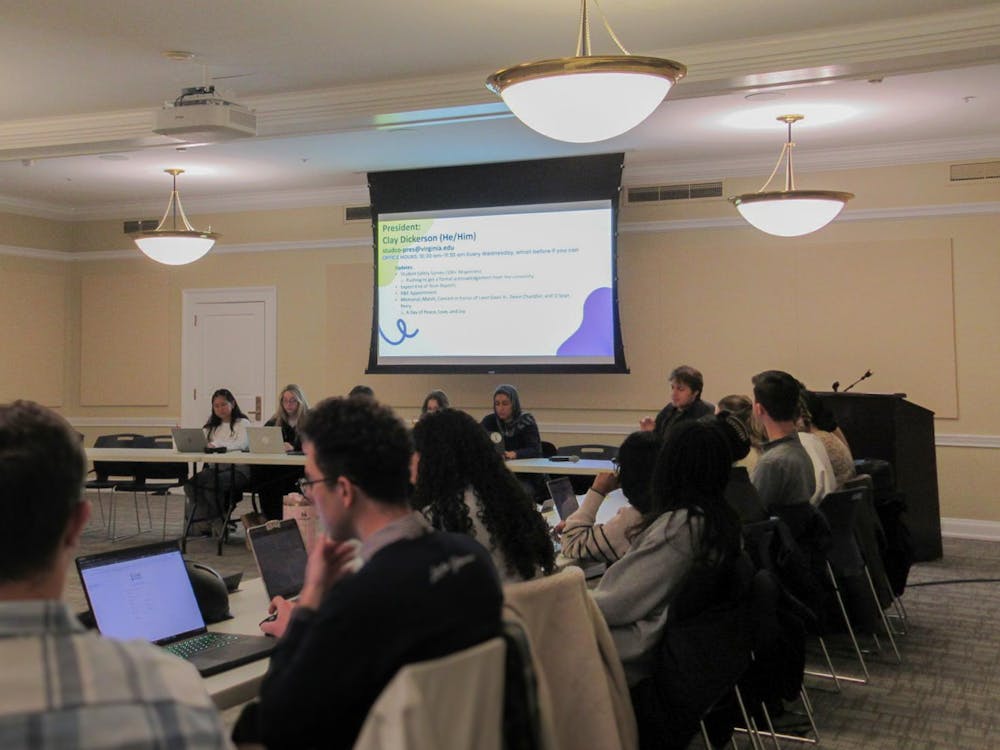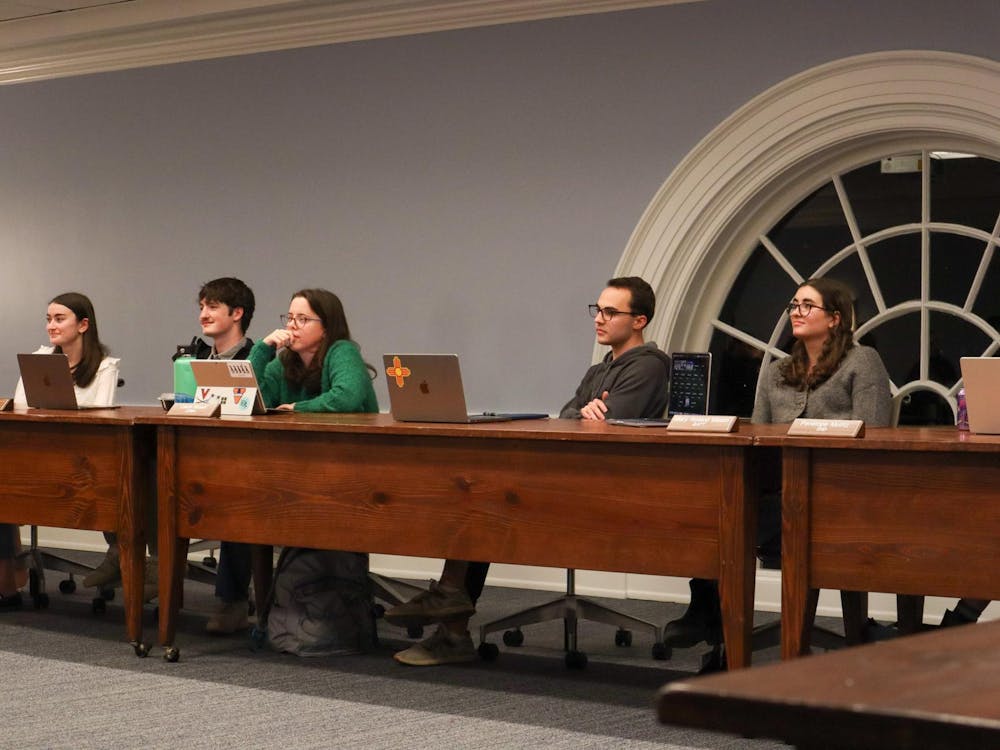A Forced Isolation With the number of students afflicted by mumps since the outbreak began at the University this fall already well into the double digits, many have had to leave Grounds to recover without spreading the highly contagious illness. Yet not everyone can go home so easily.
Some students might not be able to return home because of family situations or they simply live far away -- whether that means in another state or in another country. If a student can't make the trip home easily, and isn't allowed to remain in a dormitory living situation that puts them in such close quarters with other students, the University offers one more option -- the Mumps House.
University spokesperson Carol Wood confirmed that there was such a facility -- an apartment on Brandon Avenue was set aside a few weeks ago for this very purpose.
The house "was not being used for anything at the moment," Wood said. "So we now use it for people with mumps."
The University has not used an isolated facility to house contagious students in the 12 years she's worked at the University, Wood said.
"We identified a space that was not currently in use that was away from other students," Wood said.
While sick students might not be able to get home easily, University officials still wanted to look to the health safety of other students by keeping contagious students away from them.
The house is not "near other students who are well to prevent infecting others," Wood said.
The house was a much-needed addition in the wake of the mumps outbreak. While most students can return to their permanent homes to recover, out-of-state and international students would have a much more difficult trip.
"For students who said it was impossible to go home because of distance or family situations, we felt it was important to offer them a good place to recover," Wood said.
A male, third-year College international student from Australia was the first resident of the facility. He preferred to stay anonymous to avoid association with the mumps, although it was eventually determined he did not actually have the illness. The Mumps House was intially set up mainly for his use.
"They didn't have something ready because most people would go home," the Mumps House resident said.
Since his four-day stay, another four students have resided in the Mumps House, and one has been there as late as this Monday, according to University officials.
Life in the Mumps House
The unoccupied house does feature many necessities for a student to have a comfortable stay.
It has "all the amenities of a normal house," he said.
Wood stressed the importance of making sure the residents have as good a stay as possible.
"We make sure they're comfortable ... food is delivered three times a day," Wood said.
Besides food deliveries, residents of the house also can make use of wireless Internet.
"I had a laptop but no wireless card and they couldn't put Ethernet in," he said.
The house lacked a few other common features of dorms. The television arrived his last day and could be used by future residents.
"I had a radio -- that was about it," he said.
Student Health employees also kept up to date on his conditionthroughout his stay at the facility.
"People from Student Health came to visit every day," he said.
From their basic living needs to monitoring their health, Wood affirmed that the residents of the mumps facility were carefully supervised.
"We have people getting them what they need," Wood said.
University officials had to take care of most of the residents' needs since they're not allowed to leave the house, even to attend classes.
Students shouldn't leave the house "until they recover and aren't contagious," Wood said.
She added that the infected students can get homework from professors. Someone from the University contacted the professors of the first resident since he couldn't access the Internet during his stay.
"All my professors were great about it," he said, adding that all his instructors allowed him time to catch up later.
The main goal of the house is "to offer students a comfortable place to recuperate away from other healthy students," Wood said.
The resident confirmed the house met that goal, despite it being in a less-than-ideal circumstance.
"It was unfortunate I had to be put in the house, but the people there from Student Health went out of their way to make my stay good," he said.
Student Health Director James Turner agreed the Mumps House is not an ideal situation.
"It's unfortunate we had to isolate students," Turner said. "But in the spirit of protecting the collective student health, we hope students understand our actions."
A Mumpy Ride to the House
The first resident began his journey to the Mumps House Sunday, Oct. 2.
"I felt ill and was worried because I couldn't really eat," he said. "So I went to the hospital."
During his examination at the hospital, the staff found bumps around his throat.
"That's why they thought I might have mumps," he said.
However, there was some disagreement among the medical professionals in his diagnosis of mumps.
"One doctor thought I did and another one didn't think so," he said.
After deciding his symptoms warranted declaring he had an unconfirmed case of the mumps, he was given the option of going to the Mumps House.
"If someone has a probable case of mumps, the Health Department asks us to isolate them," Turner said.
If the sick students are within close driving distance, Turner explained their families would be asked to take them home while they remained contagious. This sick student's return home to Australia would not be so easy, so the Mumps House was started.
"The Office of the Vice President of Student Affairs was able to arrange this apartment with Housing," Turner said.
This sick student accepted the idea of going to the Mumps House.
"They let me go back to my room to pick up some things then drove me to the house," he said.
He arrived at the facility early Monday morning and stayed for four days, leaving early Friday. His stay in the Mumps House was cut short because of the arrival of his blood tests, showing he did not, in fact, need to recover in isolation.
"I didn't end up having the mumps," he said.
While Student Health knows he didn't have mumps, what he was afflicted with is still unknown.
"We still don't really know what I had," he said. "It's a toss-up between mono and tonsillitis."
His sickness is now past and he affirms he's all better now.
"I'm at 100 percent," he said.
He also attributes a nice stay in the Mumps House as part of his recovery.
"Everyone went out of their way to make me as comfortable as they could," he said.
He added that he felt the situation was definitely better than it could have been.
"I'm not complaining," he said.
Mumps at the University: A Confirmed Outbreak
The University's mumps situation has been officially called an "outbreak" by the Centers for Disease Control and Prevention.
"Three or more cases linked to each other and confirmed is CDC's definition for an outbreak," Wood said.
Wood confirmed that the University has had three linked cases among the 18 total probable undergraduate cases here in a population of over 12,000 students.
"While we may see more cases, it seems pretty contained," Wood said.
While several people have contracted mumps, there have been no serious cases.
"Most of those [who had to leave the University] are already back at school," Wood said.
Yet University officials are still concerned about future cases.
"Students -- especially first years -- live in such close proximity," Wood said. "Those are probably the students who are most vulnerable to exhibiting symptoms."
Turner suggested that people diagnosed in off-Grounds housing could probably get along just isolating themselves from thaeir roommates.
The University is still continuously urging students to get vaccinations, and Pat Lampkin, vice president for student affairs, sent out an e-mail to students Oct. 17 with basic health issues and guidelines.
"It's been a very aggressive communication with our students," Wood said.
Despite the campaign against mumps, Turner feels it will be a while before the outbreak dies down."I'm afraid it might continue to grow," Turner said. Turner cited other schools, such as Wheaton College in Illinois, whose recent mumps outbreak reached 85 cases as of Oct. 20, as evidence for the possibility of more mumps at the University.
"I'm concerned we'll have more cases and have to house more students in Mumps House or send them home," Turner said.
Students may not think this is too bad -- now that the Mumps House has a television.






